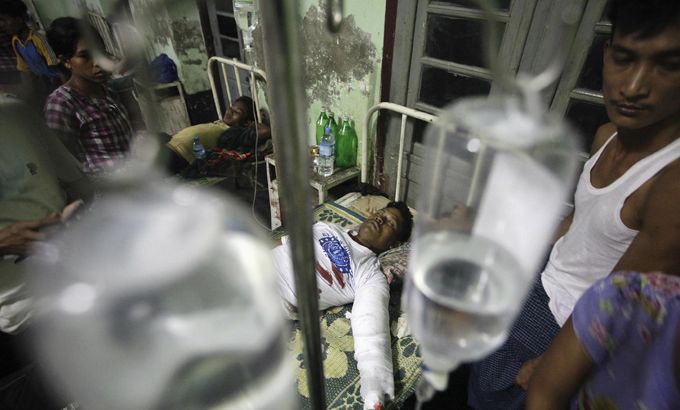Riots renew communal tension in Myanmar
At least 67 deaths reported in new outbreak of violence between Rohingya Muslims and Buddhists in Rakhine state.

At least 67 people have been killed in the latest surge of communal violence between Muslims and Buddhists in western Myanmar, a government official has said, revising down an earlier toll.
A spokesman for Rakhine state, where the fighting took place, had earlier on Friday put the death toll at 112, but later scaled that back, blaming “clerical errors”.
The UN said that Myanmar’s fledgling democracy could be “irreparably damaged” by the clashes, which come just five months after communal unrest killed more than 80 people and displaced at least 75,000 in the same region.
“The fabric of social order could be irreparably damaged and the reform and opening-up process being currently pursued by the government is likely to be jeopardised,” a spokesman for Ban Ki-moon, the UN secretary-general, said on Friday
“The widening mistrust between the communities is being exploited by militant and criminal elements to cause large-scale loss of human lives.”
At least 2,000 houses and eight religious buildings had been destroyed in the latest violence, according to state media.
Nearly 100 people had been wounded, it said.
Clashes reported
Although a local government spokesman said earlier that the situation was quiet on Friday, a resident of Ramree township, which had been spared in the recent wave of unrest, said there were clashes there on Friday morning.
“Residents are very fearful of imminent attacks by the Muslim community because security presence is very little. We don’t feel safe. We want the Bengalis to be moved away from the Rakhine community,” Kyaw Win, 30, said.
Rakhine prefer to use the term Bengali for Rohingya, whom they contend are not a distinct ethnic group.
Kyaw Win said a few houses had been burned down but that no casualties were reported.
In June, ethnic violence in Rakhine left at least 90 people dead and destroyed more than 3,000 homes. About 75,000 have been living in refugee camps ever since.
Curfews have been in place in some areas since June, and been extended to others due to the recent violence.
Tensions still simmer, in part because the government has failed to find any long-term solution to the crisis other than segregating the two communities in some areas.
Obstacle to progress
President Thein Sein’s government has described the Rohingya problem as an obstacle to development on other fronts.
He took office as an elected president last year, and has instituted economic and political liberalisation after almost half a century of repressive military rule.
“As the international community is closely watching Myanmar’s democratic transition, such unrest could tarnish the image of the country,” a statement from Thein Sein’s office, published on Friday in the state-run Myanma Ahlin newspaper, said.
“The army, police and authorities in co-operation with local people will try to restore peace and stability and will take legal action against any individual or organisation that is trying to instigate the unrest.”
The long-brewing conflict is rooted in a dispute over the Muslim residents’ origin.
Although many Rohingya have lived in Myanmar for generations, they are widely denigrated as intruders who came from neighbouring Bangladesh to steal scarce land.
The UN estimates the Rohingya population in Myanmar at 800,000. But the government does not count them as one of the country’s 135 ethnic groups, and so – like neighbouring Bangladesh – denies them citizenship.
Human rights groups say racism also plays a role: Many Rohingya, who speak a Bengali dialect and resemble Muslim Bangladeshis, have darker skin and are heavily discriminated against.